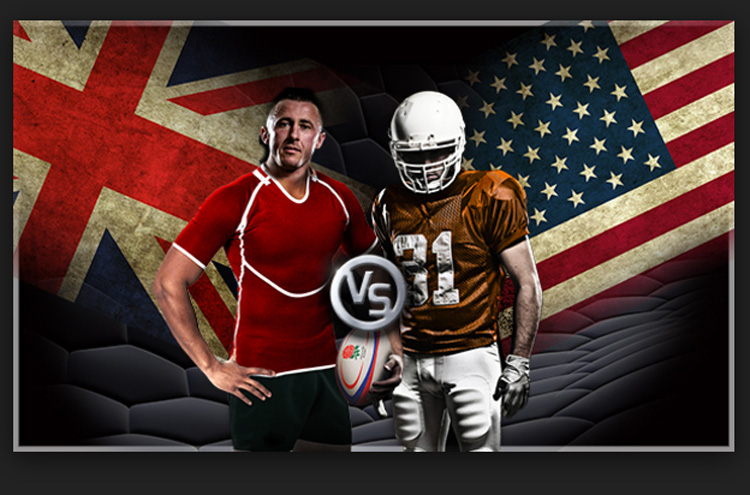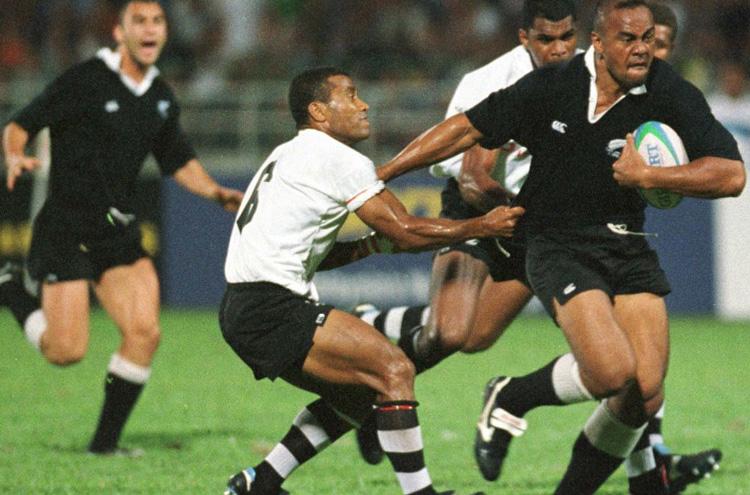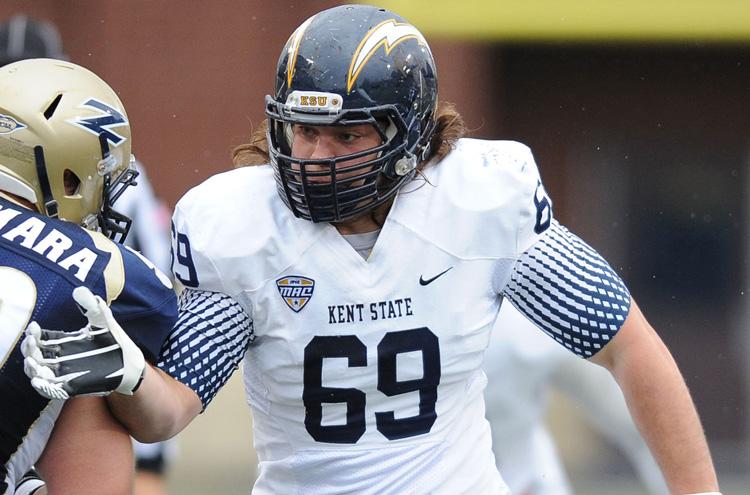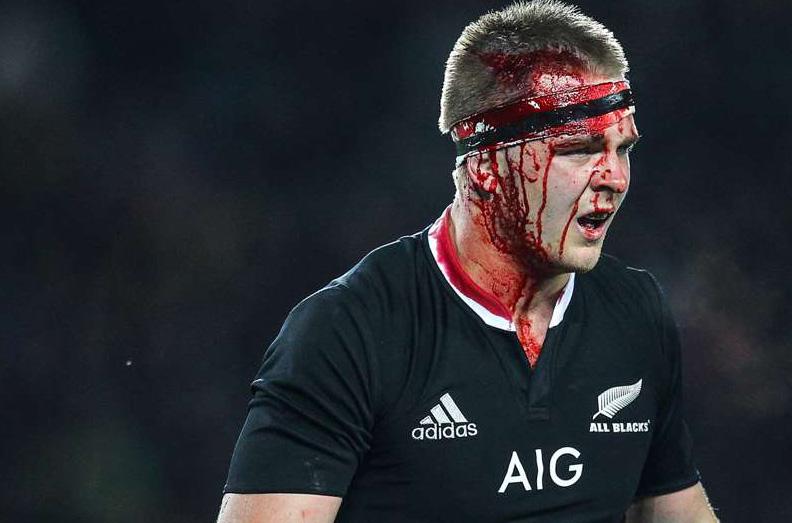
I visited Australia a decade or so ago; a rugby match was on the TV at a local pub. Being one of the few identified Americans in the establishment, it wasn’t too surprising that the topic of gridiron (NFL-style American football) eventually came up among my Aussie hosts. Despite my largely failed attempts to convince the crowd that gridiron was every bit as rough as rugby, all I could garner was at best total dismissal, and at worst contempt...

The perception outside the U.S. is that American Football is just bastardized rugby with thick padding designed to avoid the physical harm associated with the Union sport. Interestingly, most Americans hold an inverse perception: that rugby is gridiron without the pads, and as such, rugby is perceived as senselessly violent.
The misconceptions between rugby and gridiron are rooted in the belief that gridiron and rugby vs gridiron. Rugby are similar sports. The truth, however, is far from this, as anyone who’s ever played both sports can attest. In rugby, the only collision (i.e., running at speed for the purpose of forcing a player to the ground) is when one has the ball. The other 29 lads on the pitch are there for support. In American football, 21 of the 22 players had better be colliding with someone on every down – at full speed. In gridiron, there is collision while blocking. In rugby, the equivalent is called “obstruction” and is illegal, thus there are far more opportunities – requirements – for player collision in American football.
The styles of tackling are also very different. In rugby, the object is to bring the player to the ground in order to force a turnover. In gridiron, on the other hand, the purpose of tackling is to not yield a single millimeter of turf to the opposition advance. Rugby is largely about possession and gridiron is largely about territory. This creates two immensely differing approaches to tackling.
In rugby, the tackler (ideally) wants to wrap up around the upper legs, and drag the runner to ground. Sooner is better than later, but a few feet doesn’t matter much. In gridiron, the tackler prefers a head-on collision, the hard plastic helmet connecting to the opponent’s chest; a wrap up around the waist or lower subsequently follows, and then a drive backwards as far as the tackler can go. The ground is the forceful end of a preferably very long trip on an American tackle. Without a helmet, an American football player would not likely live or walk for very long in such a contest. In rugby, a tackler may not grab around the shoulders and neck (at least when the ref is looking). In gridiron, virtually any means of bringing the ball carrier to the ground is legal, so long as the facemask isn’t grabbed. This broad interpretation of the tackling rule sets gridiron far apart from its rugby counterpart, and greatly changes the amount of violence with which the objective may be carried out.
In rugby, a runner must absorb the impact of a tackler’s flesh-and-bone shoulder and arm along with the variant inertial energy associated with the tackler’s speed, mass and angle of attack. In gridiron, a ball-carrier must absorb all these things, plus the impact of a hard, plastic helmet and shoulder pads behind the force of a tackler whose mass is often greater than his rugby counterpart. By the way, there is little protection for most American football players between the sternum and the groin, which happens to comprise the precise target area of a gridiron tackler. Also, the pads are not the soft rubber found in rugby equipment. They are hard, reinforced plastic designed for the purpose of diffusing energy. Wearing gridiron pads gives one a visceral sense of invulnerability that cannot be truly replicated in rugby. Thus, the force used in gridiron tackling tends to be less restrained by the fear of injury, conscious or otherwise. There are plenty of fearless rugby tacklers, but they will rarely throw their careers (and possibly lives) away by running face-first into a head-on collision with a sprinting ball-carrier.
When a rugby player’s tackling is imminent, he (hopefully) has someone nearby that the ball can be passed to – granted, this is not a certain way to avoid a tackle, but in theory, it moves play away from him. In gridiron, all play ends when and where the ball runner is crushed – no one passes the ball in American football but the quarterback.
Having played both sports, I can say that while the tackling differs, one method is no less bearable than the other in their respective environs. Crippling injuries or death would occur if someone attempted to use American-style tackling in rugby (I know – I made that foolish mistake in one of my early matches and nearly paid dearly for it). American tackling in rugby may also result in “over-commitment,” that is to say, running at so great a speed at the ball-carrier that a successful reaction to a side-step or a reasonably competent pass is impossible (remember, in American football, there is no passing once the ball leaves the line of scrimmage). This lends credence to my theory that while former gridiron players are impressively capable of good hits in rugby, they tend to be vulnerable in getting burned by a smart, experienced backline player.
This is not to say, however, that rugby tackling is “weak.”It is not. Within the confines of the laws, it, too, has its own terrible aspect of violence; but one that is appropriate for a bunch of ruggers trying to bring down anyone who has the ball. As a backliner myself, I have both given and received my share of bone-jarring rugby tackles. But I rarely felt the kind of impact I routinely encountered in American football, even when accounting for the pads.
To those who would deride the comparative aggressiveness of American gridiron football, I would say this: you may intelligently criticize only when you have played both sports. My sense of it is that ruggers who have never played a down of football cannot meaningfully comment on the difference between the two sports. The truth of the matter is that if a skeptical rugger were to strap on gridiron armor and play just one half of American Football, they would not hold the same opinion of the sport’s violence. Being aggressively flattened a dozen or so times by 25 stone (350 pound) behemoths tends to make one a believer.
Rugby vs Gridiron By Robert Fawcett
Recent Posts
Blog Categories
Blog archives
- February 2025 (3)
- January 2025 (6)
- December 2024 (12)
- November 2024 (3)
- October 2024 (2)
- July 2024 (2)
- May 2024 (12)
- April 2024 (2)
- March 2024 (2)
- January 2024 (2)
- November 2023 (10)
- October 2023 (4)
- August 2023 (1)
- May 2023 (2)
- April 2023 (2)
- March 2023 (17)
- February 2023 (4)
- January 2023 (4)
- December 2022 (11)
- November 2022 (7)
- October 2022 (1)
- May 2022 (1)
- March 2022 (3)
- February 2022 (3)
- January 2022 (1)
- December 2021 (1)
- August 2021 (1)
- June 2021 (1)
- May 2021 (2)
- February 2021 (1)
- August 2020 (1)
- July 2020 (1)
- May 2020 (1)
- April 2020 (1)
- March 2020 (1)
- January 2020 (1)
- December 2019 (1)
- November 2019 (1)
- October 2019 (1)
- September 2019 (1)
- August 2019 (5)
- July 2019 (2)
- June 2019 (1)
- May 2019 (3)
- April 2019 (1)
- March 2019 (1)
- February 2019 (1)
- January 2019 (1)
- December 2018 (1)
- November 2018 (1)
- September 2018 (1)
- August 2018 (1)
- July 2018 (1)
- June 2018 (1)
- May 2018 (1)
- April 2018 (1)
- March 2018 (1)
- February 2018 (1)
- January 2018 (1)
- December 2017 (1)
- October 2017 (1)
- September 2017 (1)
- August 2017 (1)
- July 2017 (1)
- June 2017 (1)
- May 2017 (1)
- April 2017 (1)
- March 2017 (1)
- February 2017 (1)
- January 2017 (1)
- December 2016 (1)
- November 2016 (1)
- October 2016 (1)
- September 2016 (1)
- August 2016 (1)
- July 2016 (1)
- June 2016 (1)
- May 2016 (1)
- April 2016 (1)
- March 2016 (1)
- February 2016 (1)
- January 2016 (1)
- December 2015 (1)
- November 2015 (1)
- October 2015 (1)
- September 2015 (1)
- August 2015 (1)
- July 2015 (1)
- June 2015 (1)
- May 2015 (1)
- April 2015 (1)
- March 2015 (1)
- February 2015 (1)
- January 2015 (1)
- December 2014 (1)
- November 2014 (1)
- October 2014 (1)
- September 2014 (1)
- July 2014 (1)
- June 2014 (3)
- May 2014 (1)
- April 2014 (1)
- March 2014 (1)
- February 2014 (1)
- January 2014 (1)
- November 2013 (15)
- October 2013 (1)
- September 2013 (1)
- August 2013 (1)
- July 2013 (1)
- May 2013 (1)
- April 2013 (1)
- March 2013 (1)
- February 2013 (1)
- January 2013 (1)
- December 2012 (1)
- November 2012 (2)
- October 2012 (2)
- September 2012 (2)
- August 2012 (2)
- July 2012 (2)
- June 2012 (2)
- May 2012 (2)
- April 2012 (3)
- March 2012 (2)
- February 2012 (2)
- January 2012 (3)
- December 2011 (1)
- November 2011 (1)
- October 2011 (2)
- September 2011 (1)
- August 2011 (1)
- July 2011 (1)
- June 2011 (1)
- May 2011 (1)
- April 2011 (1)
- March 2011 (1)
- February 2011 (1)
- January 2011 (1)
- December 2010 (1)
- November 2010 (1)
- October 2010 (1)
- September 2010 (1)
- August 2010 (1)
- July 2010 (1)
- June 2010 (1)
- May 2010 (1)
- March 2010 (1)
- February 2010 (1)
- January 2010 (1)
- December 2009 (1)
- November 2009 (1)
- October 2009 (1)
- September 2009 (1)
- August 2009 (1)
- July 2009 (1)
- June 2009 (1)
- May 2009 (1)
- April 2009 (1)
- March 2009 (1)
- February 2009 (1)
- January 2009 (1)
- December 2008 (1)
- May 2005 (1)











